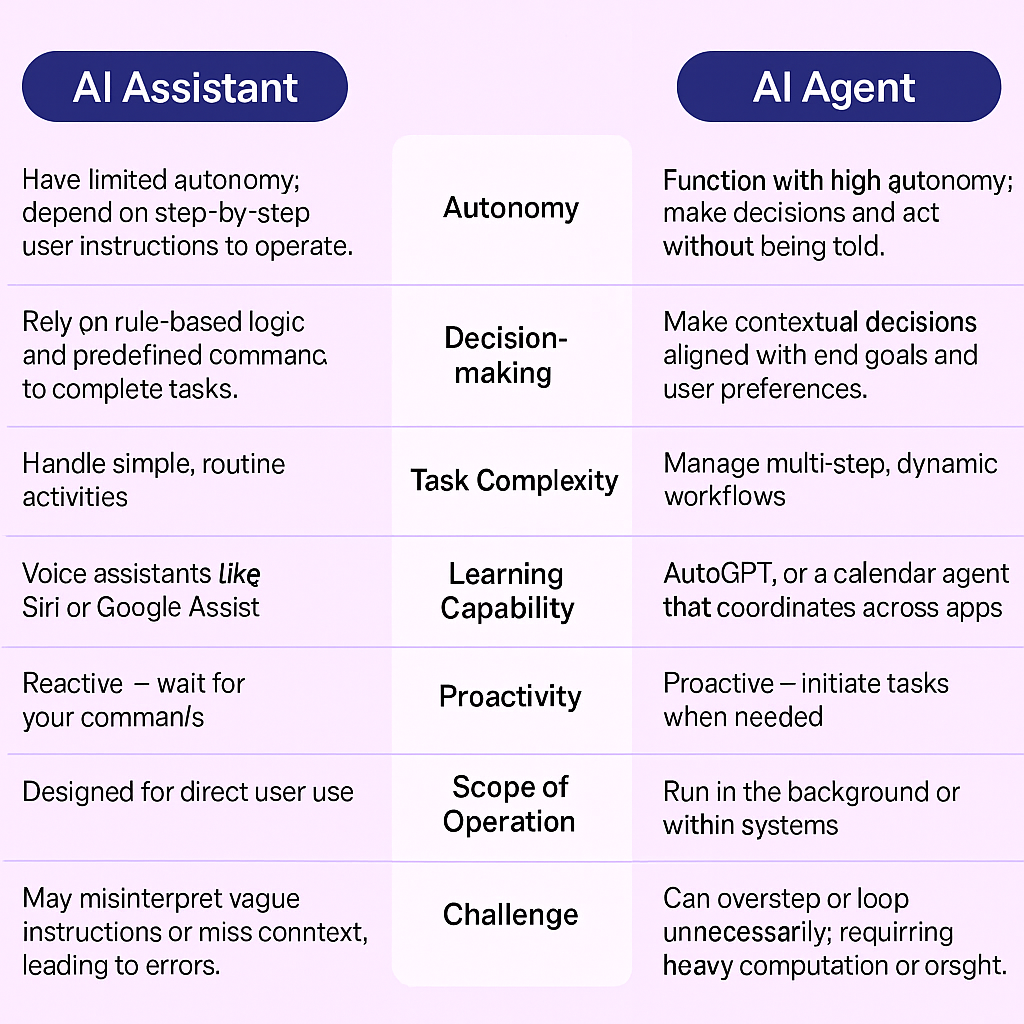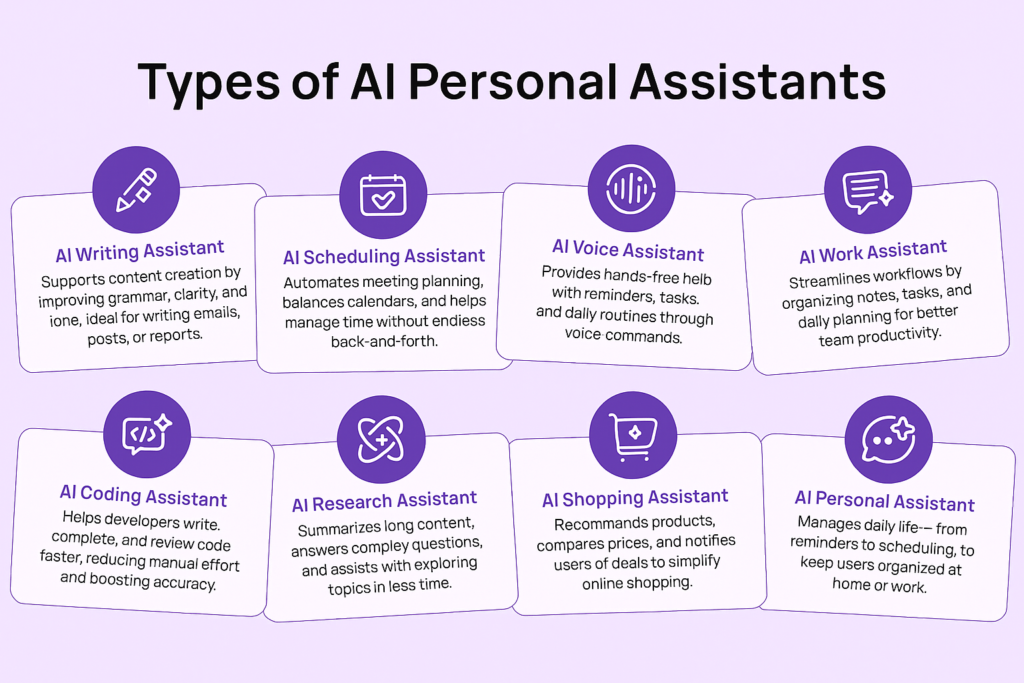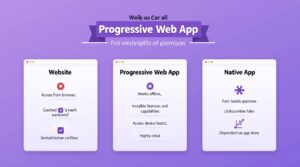click to get service View profile
In today’s fast-moving digital world, productivity isn’t just about putting in more hours — it’s about making each hour count. That’s where an AI assistant for productivity becomes a game-changer. From managing your daily tasks and scheduling meetings to drafting content and analyzing data, AI tools can simplify your workflow and help you get more done in less time. By automating routine work, these assistants free up your focus for what truly matters — strategic thinking, creativity, and meaningful progress.
But how exactly do you tap into the full potential of these tools? In this guide, we’ll break down how to effectively use an AI assistant for productivity — helping you automate repetitive tasks, stay focused, and get more done with less effort. Whether you’re a student, entrepreneur, or team leader, this article will show you how to make AI your most powerful productivity partner.
What is an AI Assistant?
An AI assistant is a smart software solution powered by artificial intelligence, often using large language models (LLMs), designed to help users perform tasks, find answers, and make informed decisions through natural language—whether by text or voice. Acting as a conversational bridge between the user and various digital tools, an AI assistant for productivity enhances workflows by simplifying interactions, reducing manual effort, and making everyday operations faster and more efficient.
Below are some of their defining characteristics:
- Natural Interaction: Communicates via text or voice in a human-like way
- Task-Oriented: Performs specific tasks (e.g., sending emails, setting reminders)
- Reactive: Responds when prompted by the user
- Integrated Tools: Connects with apps like calendars, notes, or weather services
- Limited Autonomy: Generally waits for commands and doesn’t act fully independently
- Contextual Awareness: Retains short-term context to maintain smoother conversations
How do AI Assistants Work?
AI assistants work by leveraging advanced technologies to understand your requests and respond with appropriate actions. They process natural language, integrate with the digital tools you rely on, and adapt to your behavior over time. As an AI assistant for productivity, this smart system can handle routine tasks like scheduling meetings, drafting emails, or organizing your day — all with minimal input — helping you work faster, smarter, and more efficiently.
Here are the key technologies that make this possible:
- NLP (Natural Language Processing): This allows the assistant to understand and interpret natural language commands, whether spoken or typed. For example, when you say “Schedule a meeting,” NLP helps the assistant grasp your intent and extract the necessary details.
- Machine Learning: Allows the assistant to learn from your habits over time—such as your preferred meeting hours or how you phrase emails. It uses this learning to personalize its responses and improve over time.
- APIs (Application Programming Interfaces): These let the assistant connect to your tools like Google Calendar, Slack, or your CRM. Through APIs, the assistant can check your schedule, send a message, or update a record.
- Conversational Interfaces: These are the digital interfaces where you interact with the assistant. They create a smooth, natural conversation, similar to speaking with a colleague, while the AI works behind the scenes.
For example, if you say, “Book a meeting next week,” the AI assistant processes your request using natural language understanding. It then checks your calendar, finds an available slot, and schedules the meeting automatically. Based on your habits, like preferred times or people, it can suggest smarter options without needing extra input.
AI Assistant vs. AI Agent: What are the similarities and differences?
AI assistants and AI agents both aim to reduce manual work and optimize workflows, but they differ in complexity and autonomy. An AI assistant for productivity is generally task-specific, user-driven, and responds directly to prompts—making it ideal for everyday tasks like scheduling, drafting, or organizing. In contrast, AI agents operate with greater independence, often pursuing broader goals with minimal user input. Think of AI assistants as a more focused, streamlined subset of AI agents—designed to support productivity through direct and efficient interaction.
Below, you can see a visual comparison of how AI assistants and AI agents differ across key dimensions.

To put it simply, the image highlights how AI assistants are best for small, clearly defined tasks, like asking ChatGPT to write a headline or using Siri to set a timer. You give the instruction, and they respond.
AI agents can make decisions and coordinate across tools or even collaborate with other agents. It can accomplish more complex, multi-step objectives, all with minimal human input. For example, a schedule agent might scan your availability, contact attendees, reschedule meetings, and send reminders, without you needing to step in at every stage. This difference in autonomy is key to choosing the right tool for your workflow.
Types of AI-Powered Personal Assistants with Real-Life Examples
AI assistants aren’t one-size-fits-all solutions—they’re designed to adapt to specific user needs and tasks. Whether it’s writing and editing content, managing schedules, conducting research, handling shopping, or providing technical support, each AI assistant for productivity is tailored to serve a distinct purpose. Their effectiveness depends on the use case and the tools they integrate with, allowing users to streamline various aspects of their workflow in a personalized and efficient way.

Below are the main types of AI assistants and how they’re used in everyday life:
1. AI Writing Assistant
AI writing assistants help users create content faster and with less effort. These tools support grammar correction, tone adjustments, and can even generate complete drafts based on short prompts.
AI Assistant for Productivity tools like ChatGPT, GrammarlyGO, and Jasper help enhance written communication by analyzing your input and suggesting improvements in clarity, tone, and structure. These tools are widely used by marketers and content creators to streamline tasks like drafting emails, writing blog posts, and creating social media content—boosting consistency and saving time.
2. AI Scheduling Assistant
AI scheduling assistants take over the tedious task of finding the right time for meetings and balancing your calendar. Instead of manually checking availability or sending multiple emails, these tools handle everything for you.
AI Assistant for Productivity tools like Motion and Reclaim intelligently scan your calendar, estimate task durations, and automatically schedule meetings during available time slots. By automating scheduling and reducing email back-and-forth, these assistants help team leads and managers save hours each week while ensuring smoother workflows and fewer missed appointments.
3. AI Voice Assistants
AI personal assistants are general-purpose tools that help with day-to-day life, both at home and at work. They’re especially helpful when you need hands-free or voice-activated support.
AI Assistant for Productivity tools like Siri, Alexa, and Google Assistant help busy professionals manage their day more efficiently. These assistants can answer questions, set reminders, send messages, and even control smart home devices. By using voice commands to check the weather, manage calendars, or organize tasks on the go, users reduce their mental load and stay focused throughout the day.
4. AI Work Assistant
AI work assistants are designed to streamline routine tasks across your workplace so you can focus on more strategic work. These tools help you manage meeting notes, update project tasks, and reduce the burden of documentation.
Notion AI and ClickUp’s AI assistant are great examples of how an AI assistant for productivity can simplify daily work. They automatically generate meeting summaries, assist with daily planning, and manage to-do lists—helping users stay organized and focused. These tools are especially popular among tech and operations teams, who use them to reduce repetitive administrative tasks and keep project workflows running efficiently.
5. AI Coding Assistant
AI coding assistants help developers write high-quality code more efficiently. They provide real-time suggestions, complete code automatically, and explain complex logic when needed.
AI Assistant for Productivity tools like GitHub Copilot and Amazon CodeWhisperer offer real-time code suggestions and intelligent auto-completions as developers type. Integrated directly into popular code editors like Visual Studio Code and IntelliJ, they also provide relevant documentation tips to streamline development. By reducing time spent on boilerplate code, catching bugs early, and keeping focus on core logic over syntax, these assistants significantly boost coding efficiency.
6. AI Research Assistant
AI research assistants sift through large volumes of information to surface relevant insights. They save time on reading and help synthesize complex topics quickly.
Elicit and Perplexity AI are research-focused tools designed to help users navigate complex topics more efficiently. These AI assistants for productivity excel at summarizing academic papers, providing evidence-based answers, and generating structured research outlines—making deep-dive analysis faster and more manageable. Because of their ability to streamline information gathering, they’re widely adopted in research-intensive fields like academia, journalism, and market analysis.
7. AI Shopping Assistant
AI shopping assistants are tools that help users discover products more easily and shop smarter. They use AI to recommend items, compare prices, and notify shoppers about deals.
For example, Klarna’s AI assistant and Google Shopping AI are tools that help users discover products more efficiently. They analyze your browsing habits to suggest items, compare prices, and help you find the best deals with less effort.
How to Build an AI Assistant
Building an AI assistant is no longer just for developers. Today, product managers, designers, and AI enthusiasts can create powerful solutions using no-code platforms and open AI models. However, creating a truly effective AI assistant for productivity goes beyond simply setting up a chatbot. It starts with identifying a real, meaningful problem—either for yourself or your users—and designing the assistant to solve it in a way that saves time, reduces friction, and adds genuine value to daily workflows.
Here’s a step-by-step guide to help you build your own assistant:
Step 1: Define the Purpose of Your Assistant
Before diving into tools or models, get clear on what your AI assistant is meant to do. Instead of building a generalist that handles many tasks poorly, focus on a single high-impact use case. Think about your biggest pain point. What repetitive task do you wish someone (or something) could do for you?
Examples might include sorting job applications based on skill match, drafting meeting summaries from call recordings, or flagging negative reviews in app store feedback.
A clearly defined purpose makes your assistant easier to test, faster to launch, and more likely to succeed. It’s like hiring a specialist: the narrower the scope, the better the performance.
How to do this:
- Brainstorm Pain Points: List the tasks you repeat often that are tedious or rule-based.
- Audit Daily Tasks: Reflect on your day-to-day workflows. What would you love to automate?
Prioritize by Impact: Choose tasks that are high frequency, clearly defined, and easy to validate with automation.
Step 2: Choose the Right LLM (Large Language Model)
Selecting the right large language model (LLM) is essential to ensure your AI assistant for productivity operates efficiently and aligns with your unique tasks. Since each LLM has different capabilities, choosing one that matches your specific needs helps prevent common issues like slow response times, low accuracy, or unnecessary costs. The right model can make your assistant smarter, faster, and more effective in boosting your overall productivity.
- GPT-4o (OpenAI): Great for general-purpose assistants that need fast, conversational responses and the ability to handle text, images, and code.
- Claude (Anthropic): Best for long-context reasoning tasks like reviewing legal documents or multi-hour transcripts.
- Gemini (Google): Ideal when web access is critical, such as pulling real-time data for news or market trends.
Also consider:
- Latency: Fast replies are critical for real-time tasks.
- Cost: High usage requires models that are efficient and scalable.
- Privacy: If you’re working with sensitive data, some models allow on-prem or private deployments.
How to do this:
- Match the Model to Your Task: Compare different LLMs based on the assistant’s task.
- Build a Quick Prototype: Test your use case in OpenAI Playground or Anthropic’s web interface.
Evaluate Results Side-by-Side: Run the same prompt across models and see which output is clearest, fastest, and most useful for your needs.
Step 3: Choose the Right Channel & Design the User Experience
Think about where and how you want to interact with your assistant. Will it live in your Slack workspace, Notion dashboard, or inside your website? For mobile work, maybe it should respond via voice.
A seamless interface helps you adopt it more naturally and use it in your daily workflow.
How to do this:
- Define the Entry Point: Define where and when the assistant appears (e.g., chat icon on a help page, onboarding pop-up, or a persistent embedded widget in your product dashboard).
- Create Clickable Prototypes: Build and test clickable wireframes in tools like Figma to ensure the interaction feels intuitive and accessible.
- Script Sample Conversations: Play out interactions to refine tone, timing, and UI triggers.
Step 4: Connect to Your Tools and Data
To make your assistant truly useful, it needs access to the right systems, your CRM, Notion docs, Google Calendar, support tickets, or databases. This allows it to go beyond chatting and actually do things.
How to do this:
- Map Required Integrations: Identify the tools your assistant needs to access to be useful, like your CRM (e.g., Salesforce), help desk (e.g., Zendesk), or internal database.
- Automate with No-Code Tools: Use tools like Zapier, Make, or n8n to automate routine workflows, such as updating records or triggering notifications when tasks are completed.
- Build Advanced Integrations: Use APIs or frameworks like LangChain for complex If your assistant needs to handle complex tasks that require understanding multiple data points, start by integrating via APIs or AI Agent frameworks like LangChain. You can also use Retrieval-Augmented Generation (RAG) to pull targeted information from documents, databases, or internal knowledge bases.
- Add Memory: Your assistant should get smarter over time. Add memory so it can personalize responses, track ongoing tasks, and recall prior chats.
Step 5: Run & Iterate
Once your assistant is live, treat it as a work in progress. Test it in real conditions, gather usage data, and refine it continuously. Early runs will expose gaps, unexpected inputs, and improvements you might not predict during design.
How to do this:
- Collect Feedback: Add a way to rate responses or flag mistakes during real use.
- Analyze Conversations: Review chat logs to identify unclear replies or moments of friction.
- Tweak and Improve: Update prompts and adjust workflows based on the findings from feedback and analysis.
Final Thoughts
AI assistants are no longer futuristic concepts — they’ve become practical, everyday tools that can significantly enhance how you work. When used effectively, an AI assistant for productivity can help you save time, eliminate repetitive tasks, and shift your focus to high-impact activities like creative thinking, strategic planning, and personal development.
The real value lies in using these assistants intentionally. Begin with small tasks, explore their full range of features, and gradually automate the routines that slow you down. Whether you’re a freelancer, a team leader, or running a business, the right AI assistant for productivity can help you accomplish more with less effort and greater clarity.
The future of work is intelligent, efficient, and AI-driven — and it starts by turning your assistant into a true productivity partner.

